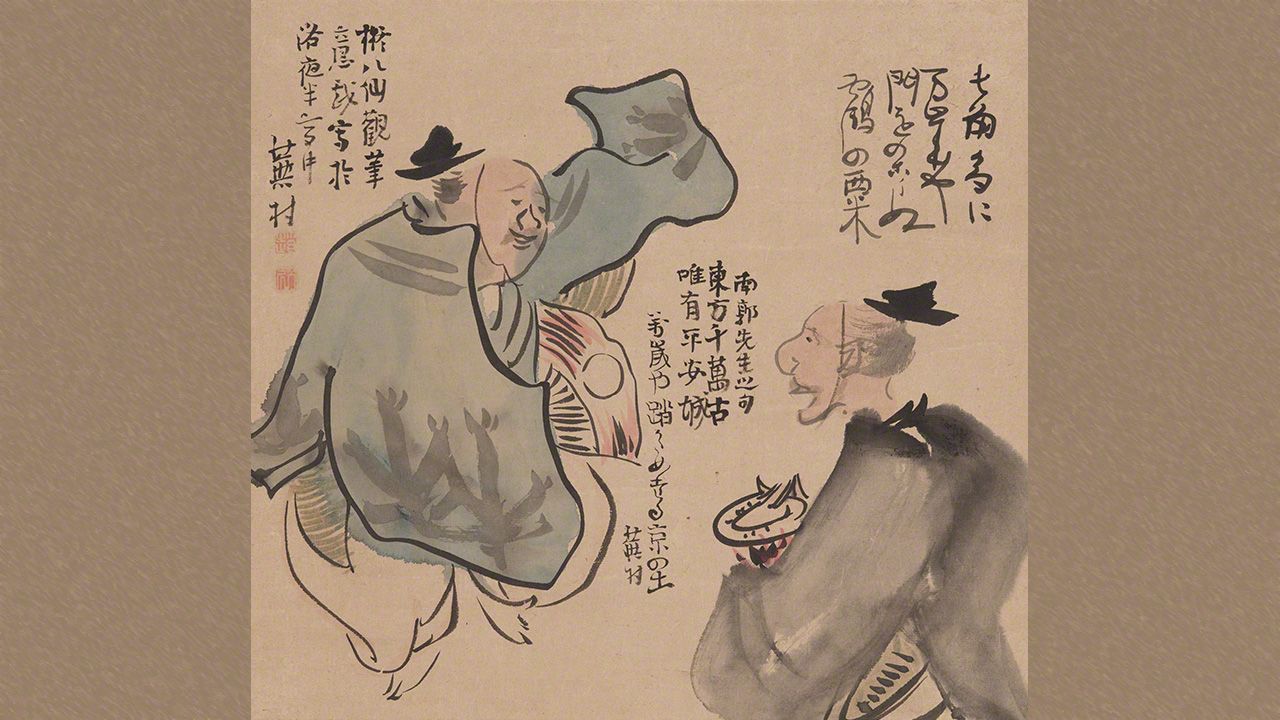
A Journey Through Japanese Haiku
Laughing in the Year
Culture Environment Lifestyle- English
- 日本語
- 简体字
- 繁體字
- Français
- Español
- العربية
- Русский
万歳や踏かためたる京の土 蕪村
Manzai ya / fumikatametaru / Kyō no tsuchi
Manzai performers—
hardening Kyoto’s earth
with their tread(Poem by Buson, written in 1770 or later.)
Japan has the saying warau kado ni wa fuku kitaru, or literally “good fortune comes to laughing gates,” with the “gates” here representing happy homes. And certainly we wish to meet the New Year with a smile.
Contemporary manzai comedy is not connected to a particular season, but its forerunner of the same name was associated with New Year. It featured the tayū, a dancer, and the saizō, a joker carrying a drum. At New Year, the pair would go around to people’s houses, making residents laugh with comical exchanges while at the same time wishing for good health and long life for the household through dances and prayer.
As both a painter and a poet, Buson has left many haiga works that combine text with an illustration. The banner image here is one such example. The beaming smile of the dancing tayū and the expression of the saizō, beating the drum and chanting, must have caused spectators to instinctively break into smiles.
Buson’s signature in the top left indicates that he was in Kyoto and includes the name Yahantei, which he took in 1770, indicating that it was written in that year or later. Although the custom has since died out, at the time Yamato manzai performers would travel from villages in what is now the northwest of Nara Prefecture to make the rounds in Kyoto at New Year.
Unpacking the haiku, its meaning is “Many manzai performers have danced festive dances each New Year in Kyoto, treading the earth down and making it a firm and strong city.” There were ceremonies in which treading down the earth was thought to drive away evil and bring blessings to local residents. It is a truly auspicious haiku for the city that was Japan’s capital for 1,000 years.
(Originally published in Japanese. Banner image: Buson’s Manzai-zu. Courtesy of the Agency for Cultural Affairs, photograph by Ochiai Haruhiko.)